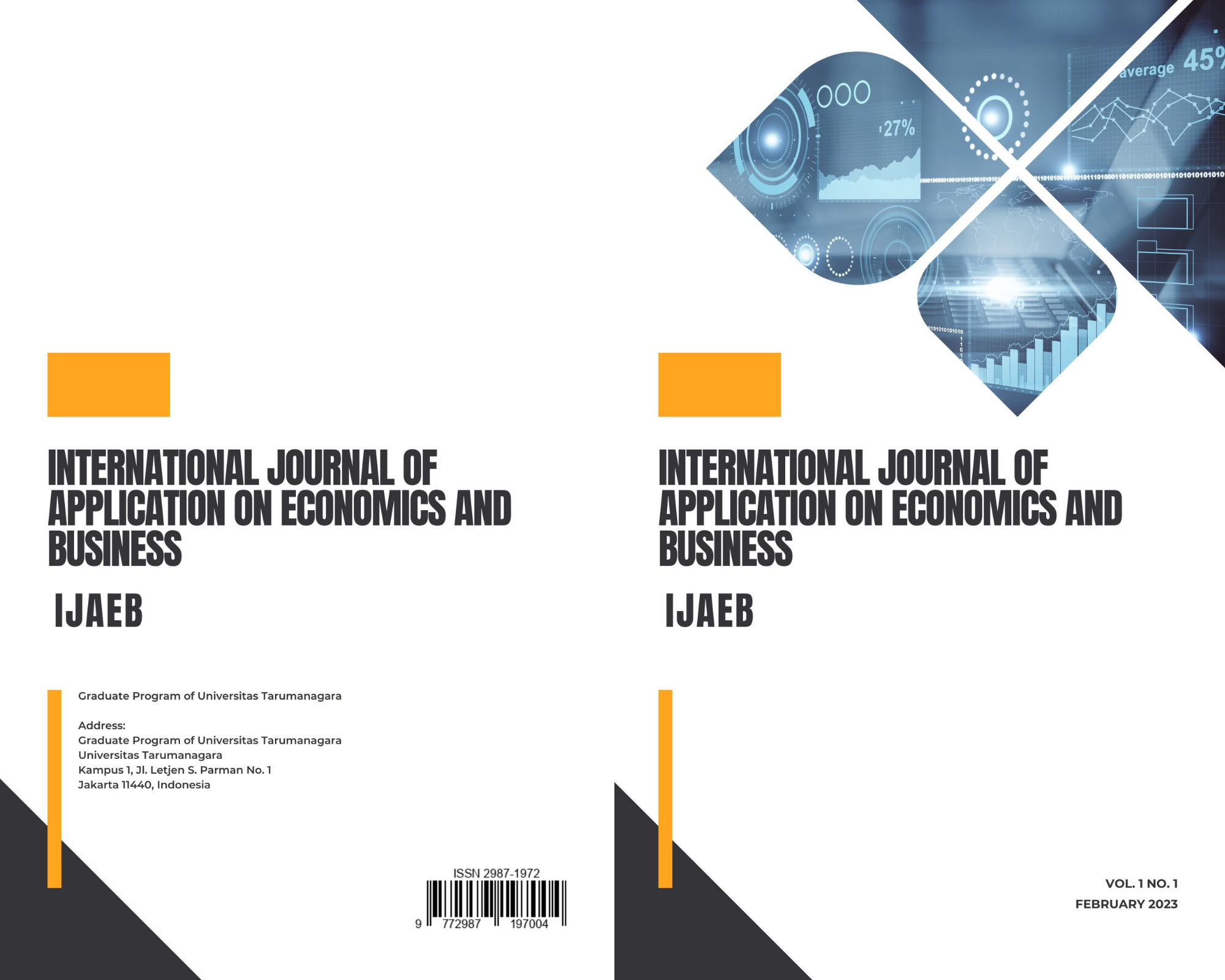The Effects of Demographic Factors on Investment Decision: Financial Literacy and Behavioral Bias as Mediating Variables
Main Article Content
Abstract
In society after COVID-19 Pandemic, awareness on financial well-being is on the rise and many attempts to achieve it through investment. But, to invest means to make decision among numerous alternatives and risks. This research aims to find out how investment actors’ demographic factors, financial literacy, and behavioral bias affect the investment decisions they make, where it highlights upon a point still rarely disclosed: whether financial literacy and behavioral bias are able to mediate the relationship between demographic factors and investment decision. The result for SEM-PLS analysis of 151 young investment actors below the age of 25 and adult investment actors of 25 years old and above shows that behavioral bias can act as a mediator while financial literacy cannot; demographic factors that is addition of family members, financial management behavior of financial literacy, and behavioral bias in the form of overconfidence all have a positive and significant effect as well. These findings give the implication that responsibilities towards one’s family, as well as financial behavior and self-confidence, play a noticeable role on investment decision.
Article Details

This work is licensed under a Creative Commons Attribution-NonCommercial-ShareAlike 4.0 International License.
This journal provides immediate open access to its content on the principle that making research freely available to the public supports a greater global exchange of knowledge.
IJAEB by Graduate Program of Universitas Tarumanagara is licensed under a Creative Commons Attribution-NonCommercial-ShareAlike 4.0 International License.. Permissions beyond the scope of this license may be available at https://journal.untar.ac.id/index.php/ijaeb
References
Schroders. 2021. Investment behavior post-pandemic. Investing Report. Retrieved October 24, 2021 from https://www.schroders.com/en/us/insights/global-investor-study/2021-findings/ investing-report/#sc-art-9
Jakpat. 2016. Indonesian investment plan - Survey report. Retrieved October 24, 2021 from https://blog.jakpat.net/indonesian-investment-plan-survey-report/
Arup Kumar Sarkar and Tarak Nath Sahu. 2018. Demographic factors, awareness, perceived risk attitude and investment behaviour – A discussion. In Investment Behaviour. 9–20. DOI: https://doi.org/10.1108/978-1-78756-279-020181002
Icek Ajzen. 2012. The theory of planned behavior. In Handbook of Theories of Social Psychology: Volume 1. 438–459. DOI:https://doi.org/10.4135/9781446249215.n22
Muhammad Noor, Finnah Fourqoniah, and Muhammad Fikry Aransyah. 2020. Investigation of financial inclusions, financial literation, and financial technology in Indonesia. J. Perspekt. Pembiayaan dan Pembang. Drh. 8, 3 (2020), 257–268. DOI: https://doi.org/10.22437/ ppd.v8i3.9942
Daniel Kahneman and Amos Tversky. 1974. Judgment under uncertainty: Heuristics and biases. Science (80-. ). 185, 4157 (1974), 1124–1131.
H. Kent Baker, Greg Filbeck, and Victor Ricciardi. 2017. Financial behavior: Players, services, products, and markets. Oxford University Press, New York, NY.
Satish Kumar and Nisha Goyal. 2016. Evidence on rationality and behavioural biases in investment decision making. Qual. Res. Financ. Mark. 8, 4 (2016), 270–287. DOI:https://doi.org/10.1108/QRFM-05-2016-0016
Noura Metawa, M. Kabir Hassan, Saad Metawa, and M. Faisal Safa. 2019. Impact of behavioral factors on investors’ financial decisions: case of the Egyptian stock market. Int. J. Islam. Middle East. Financ. Manag. 12, 1 (2019), 30–55. DOI:https://doi.org/10.1108/IMEFM-12-2017-0333
Deavicris Ari Senda, Caecilia Wahyu Estining Rahayu, and Christina Heti Tri Rahmawati. 2020. The effect of financial literacy level and demographic factors on investment decision. Media Ekon. dan Manaj. 35, 1 (2020), 100–111. DOI:https://doi.org/10.24856/mem.v35i1.1246
Hussein A. Hassan Al‐Tamimi and Al Anood Bin Kalli. 2009. Financial literacy and investment decisions of UAE investors. J. Risk Financ. 10, 5 (November 2009), 500–516. DOI: https:// doi.org/10.1108/15265940911001402
Yoshihiko Kadoya, Mostafa Saidur, and Rahim Khan. 2020. What determines financial literacy in Japan? J. Pension Econ. Financ. 19, (2020), 353–371. DOI: https://doi.org/10.1017/ S1474747218000379
Kelvin Tanuwijaya and Ignatius Roni Setyawan. 2021. Can financial literacy become an effective mediator for investment intention? Accounting 7, 7 (2021), 1591–1600. DOI: https://doi.org/ 10.5267/j.ac.2021.5.011
H. Kent Baker, Satish Kumar, Nisha Goyal, and Vidhu Gaur. 2019. How financial literacy and demographic variables relate to behavioral biases. Manag. Financ. 45, 1 (January 2019), 124–146. DOI:https://doi.org/10.1108/MF-01-2018-0003
Rajdeep Kumar Raut. 2020. Past behaviour, financial literacy and investment decision-making process of individual investors. Int. J. Emerg. Mark. 15, 6 (2020), 1243–1263. DOI: https://doi.org/10.1108/IJOEM-07-2018-0379
Sreeram Sivaramakrishnan, Mala Srivastava, and Anupam Rastogi. 2017. Attitudinal factors, financial literacy, and stock market participation. Int. J. Bank Mark. 35, 5 (2017), 818–841. DOI: https://doi.org/10.1108/IJBM-01-2016-0012
Angga Budiarto and Susanti. 2017. Pengaruh financial literacy, overconfidence, regret aversion bias, dan risk tolerance terhadap keputusan investais (Studi pada investor PT. Sucorinvest Central Gani Galeri Investasi BEI Universitas Negeri Surabaya). J. Ilmu Manaj. 5, 2 (2017), 1–9.
Maqsood Ahmad and Syed Zulfiqar Ali Shah. 2020. Overconfidence heuristic-driven bias in investment decision-making and performance: mediating effects of risk perception and moderating effects of financial literacy. J. Econ. Adm. Sci. ahead-of-p, ahead-of-print (December 2020). DOI:https://doi.org/10.1108/JEAS-07-2020-0116
Khaira Rizfia Fachrudin and Khaira Amalia Fachrudin. 2016. The influence and experience toward investment decision with moderated by financial literacy. Polish J. Manag. Stud. 14, 2 (2016), 51–60. DOI:https://doi.org/10.17512/pjms.2016.14.2.05
Susan M. Sawyer, Peter S. Azzopardi, Dakshitha Wickremarathne, and George C. Patton. 2018. The age of adolescence. Lancet Child Adolesc. Heal. 2, 3 (2018), 223–228. DOI: https://doi.org/10.1016/S2352-4642(18)30022-1
Christian M Ringle, Sven Wende, and Jan-Michael Becker. 2015. SmartPLS 3. Retrieved from https://www.smartpls.com
Joe F Hair, Christian M Ringle, Marko Sarstedt, Joe F Hair, Christian M Ringle, and Marko Sarstedt. 2014. PLS-SEM : Indeed a Silver Bullet PLS-SEM : Indeed a Silver Bullet. January 2015 (2014), 37–41. DOI:https://doi.org/10.2753/MTP1069-6679190202
Lutfi. 2010. The relationship between demographic factors and investment decision in Surabaya. J. Econ. Bus. Account. Ventur. 13, 3 (2010), 213–224. DOI: https://doi.org/10.3844/ ijrnsp.2010.25.28
Ani Caroline Grigion Potrich, Kelmara Mendes Vieira, and Guilherme Kirch. 2015. Determinants of financial literacy: Analysis of the influence of socioeconomic and demographic variables. Rev. Contab. e Financ. 26, 69 (2015), 362–377. DOI: https://doi.org/10.1590/1808-057x201501040
Baiq Fitri Arianti. 2018. The influence of financial literacy, financial behavior and income on investment decision. Econ. Account. J. 1, 1 (2018), 635–648.
Rafinza Widiar Pradhana. 2018. Pengaruh financial literacy, cognitive bias, dan emotional bias terhadap keputusan investasi (Studi pada investor Galeri Investasi Universitas Negeri Surabaya). J. Ilmu Manaj. 6, 3 (2018), 108–117.
Hendang Tanusdjaja. 2018. Keputusan investasi investor individu berdasarkan kompetensi, overconfidence, dan pendidikan. J. Muara Ilmu Ekon. dan Bisnis 2, 1 (2018), 234–244. DOI: https://doi.org/10.24912/jmieb.v2i1.998



